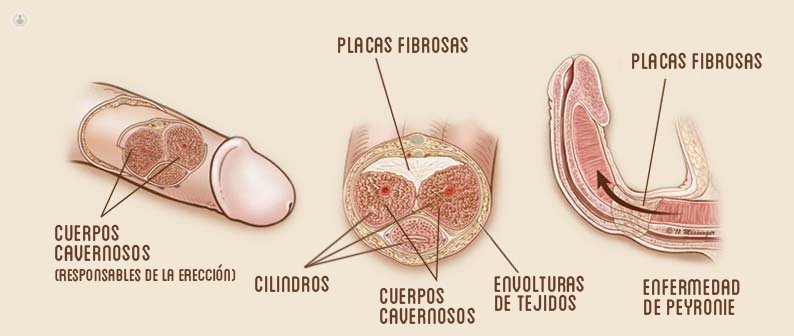How to treat Peyronie's disease
Written by: Peyronie's disease plaques form on the penis fibrosis. The most common symptoms are curvature of the penis during erection, pain, deformity of the penis and erectile dysfunction. Although treatments have been ineffective, currently they used techniques Urology that could replace surgery, such as intraplate Xiaflex injection therapy and shock waves.
Peyronie's disease plaques form on the penis fibrosis. The most common symptoms are curvature of the penis during erection, pain, deformity of the penis and erectile dysfunction. Although treatments have been ineffective, currently they used techniques Urology that could replace surgery, such as intraplate Xiaflex injection therapy and shock waves.
Peyronie 's Disease: What It Is
Peyronie's disease is the formation of fiberboards in the "tunica albuginea", a layer of elastic tissue that surrounds the corpora cavernosa of the penis.
It is an acquired disorder, localized and progressive, of unknown origin, which ends up producing a curvature of the penis during erection and may also be accompanied by pain, deformity or erectile dysfunction.
Stages of Peyronie's disease and diagnosis
Urology differ in two phases in the clinical course of the disease: acute and chronic. The acute phase, which typically lasts between 12 and 18 months, is characterized by painful erections, progressive curvature or deformity of the penis, palpable plaque and, sometimes, erectile dysfunction. In the chronic phase it stabilizes deformity and pain disappears.
The diagnosis is usually obvious based on patient history and clinical examination, in addition to the symptoms mentioned above during the development of the disease.
Treatment of Peyronie's disease
Medical treatment to Peyronie's disease has proved ineffective. They have used oral drugs, topical, intralesional, penile traction devices, etc.. Lately gaining strength intraplate injection Clostridium histolyticum collagenase, first nonsurgical treatment for this disease, and therapy with shock waves.
Surgery is the only alternative in those cases where there is a significant penile curvature. There are different surgical variations, but most of them try to straighten the penis at the expense of a decrease in the length of the convex side of the bend to match the concave portion where the plate is, without acting on it.
Another alternative is to remove the plate with subsequent use of a graft to cover the defect. This alternative is often associated with impoverishment of erectile function.


